The genus Tetragonopterus used to be the catch-all for all smaller tetra species, which are now found in the genera Hemigrammus, Hyphessobrycon or Moenkhausia, for example. The English term “tetra” for all tetras, an abbreviation of Tetragonopterus, has survived. Nowadays there are only 14 species of Tetragonopterus, of which only T. argenteus can be considered an aquarium fish (see: https://www.aquariumglaser.de/en/fisharchive/tetragonopterus-argenteus-2/). Incidentally, 9 of the current 14 species were only scientifically described after 2010; it is therefore obvious that they look very similar, otherwise they would certainly have been recognized earlier; the majority of them were previously assigned to T. chalceus.
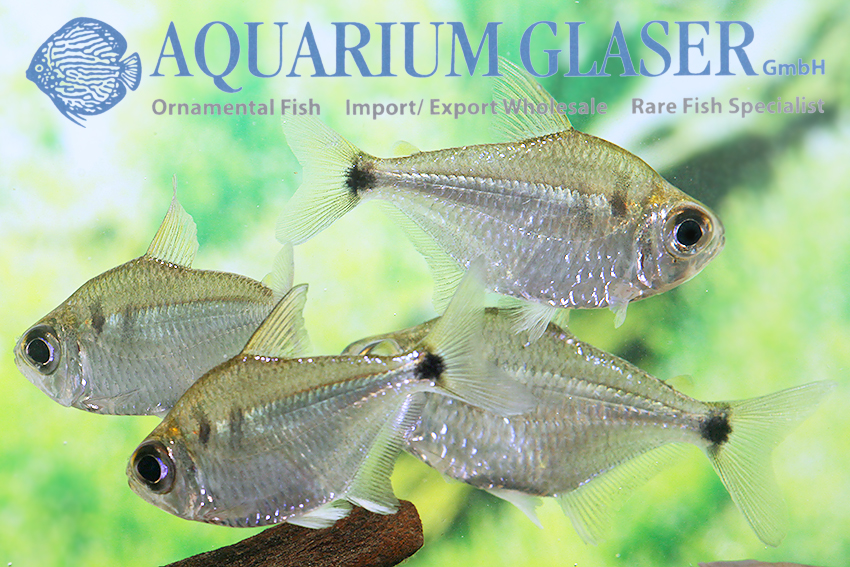
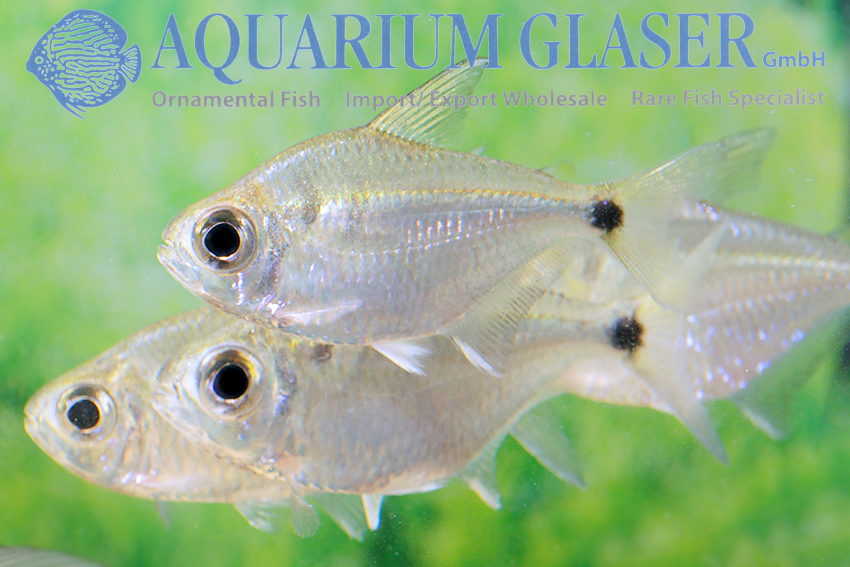
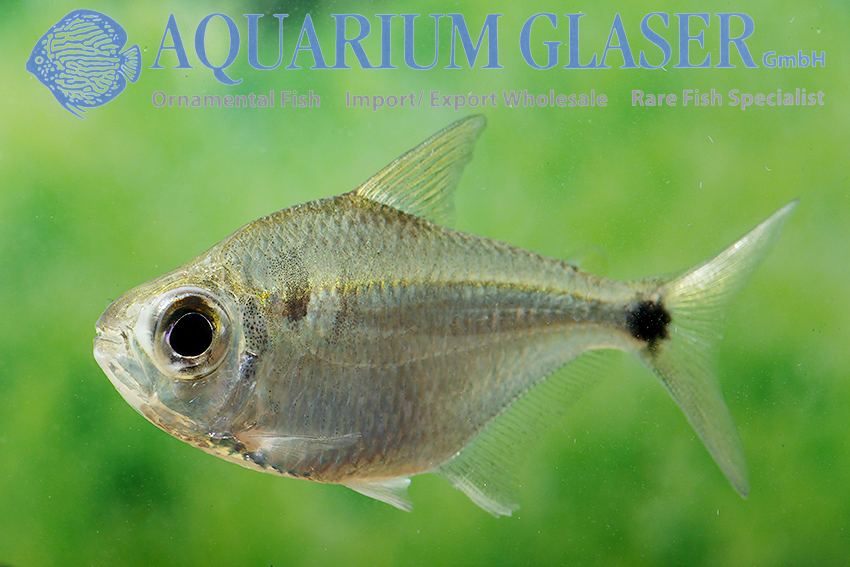

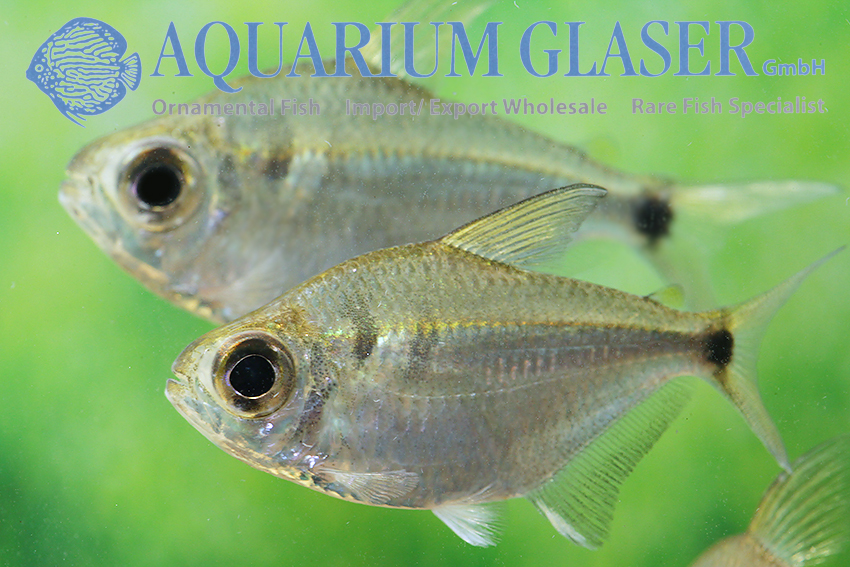
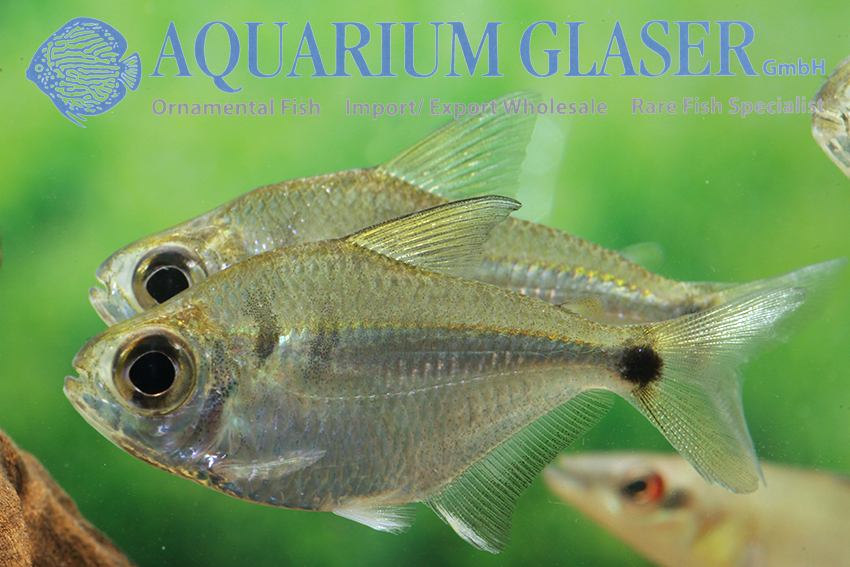

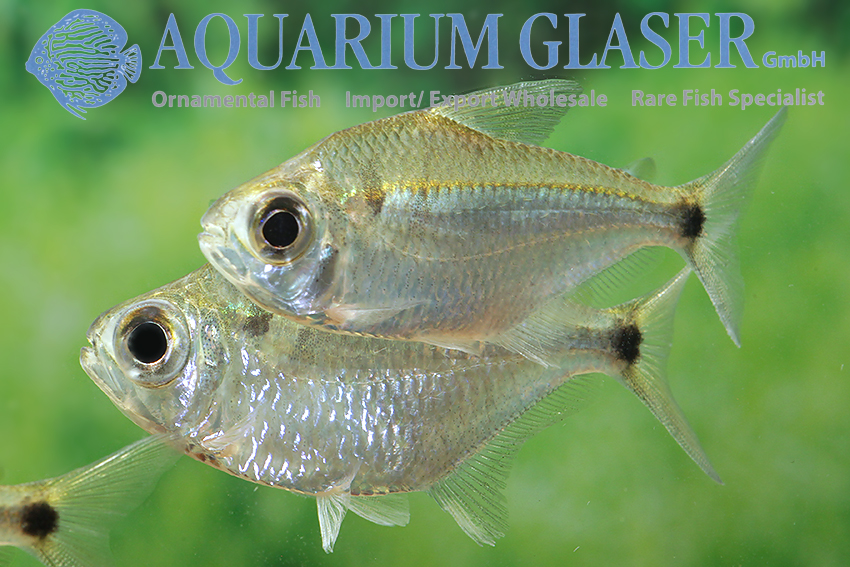
We have now been able to import a Tetragonopterus species from Brazil under the name T. chalceus, and in order to identify it, we began a major literature search. Initially, we provisionally classified it as T. chalceus, as this is how it would have been designated before 2010. We cannot take into account some important characteristics for the systematics of tetras, such as the shape and number of teeth or the gill rakers, because they cannot be recognized on the living animal and we do not kill animals for identification purposes. But color characteristics are also important for identification. Our Tetragonopterus, for example, has two elongated, vertical shoulder spots ( = humeral spots) and a circular tail root spot.
According to the latest identification key (Silva et al., 2016), T. argenteus, T. carvalhoi, T. daguae, T. rarus and T. georgiae can be ruled out from the outset (scale and pattern characteristics). T. anostomus and T. kuluene (both only one humeral spot) can also be ruled out. This leaves T. araguaiensis, T. denticulatus, T. juruena, T. ommatus, T. manaos, T. franciscoensis and T. chalceus. At this point T. chalceus was ruled out, because in this species there is only one scale width between the two humeral spots, whereas in our imports there are three. T. juruena and T. denticulatus differ, among other things, by 6 rows of scales between the lateral line and the dorsal fin base (T. juruena) and 7 rows (T. denticulatus); T. juruena was thus eliminated. Although T. franciscoensis is very similar to our specimens, it is only found in north-eastern Brazil; however, our fish are certainly not from there. According to the exporter, they originate from the Rio Tocantins; T. araguaiensis and T. denticulatus occur there (both described from the Rio Araguaia, which is a tributary of the Rio Tocantins). Unfortunately, the species diagnoses are limited to the number of gill rakes. But a careful comparison of the illustrations of both species makes it more likely that our imports are T. denticulatus. T. ommatus – just for the sake of completeness – is so far only known from the middle Rio Tapajós and the last species described (2018), T. manaos, comes from the Rio Negro.
We have described the identification process in such detail because fish such as Tetragonopterus denticulatus are certainly only of interest to specialists and collectors of rarities, who usually attach great importance to correct identification. The pictures we show here are probably the first live photos of the species. The large eye is striking, indicating a crepuscular lifestyle. The animal does not appreciate bright light at all. The maximum length of T. denticulatus known to date is around 7 cm (without caudal fin). Accordingly, our animals (4-6 cm) are probably sexually mature. They are very peaceful, lively and somewhat skittish. The animals actively seek the company of conspecifics, so they are to be regarded as schooling fish. So far, we have not noticed any special care requirements and the fish can be characterized as extremely easy to care for.
For our customers: the animals have code 296353 on our stocklist. Please note that we only supply the wholesale trade.
Literature
Silva, G. S. C., B. F. Melo, C. Oliveira & R. C. Benine (2016): Revision of the South American genus Tetragonopterus Cuvier, 1816 (Teleostei: Characidae) with description of four new species. Zootaxa 4200 (no. 1): 1-46
Urbanski, B. Q., B. F. Melo, G. S. C. Silva & R. C. Benine (2018): A new species of Tetragonopterus (Characiformes: Characidae) from Central Amazon lowlands, Brazil. Neotropical Ichthyology v. 16 (no. 2) (e3170158): [1-7]
Text & photos: Frank Schäfer




